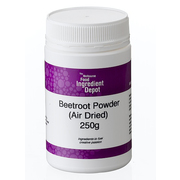All those strange food terms
Author: Phil Date Posted:10 February 2013

A description of all those strange food terms.
Some food additives have more than one use. Food additives are listed according to their functional or class names. Examples of the most common functions are:
Acids, Acidity regulators and Alkalis
These additives help to maintain a constant acid level in food. This is important for taste, as well as to influence how other substances in the food function. For example, an acidified food can retard the growth of some micro-organisms.
An example form this group is citric acid.
Anti-caking agents
They reduce the tendency of individual food particles to adhere to each other and there by improve its flow characteristics. For example, seasoning with an added anti-caking agent flows freely and does not clump together.
An example form this group is Silicon dioxide powder.
Antioxidants
retard or prevent the oxidative deterioration of foods. For example, in fats and oils, rancid flavours can develop when they are exposed to oxygen. Antioxidants prevent this from happening.
Bulking agents
These contribute to the volume of the food, without contributing significantly to its available energy. Other spice companies add these to their spice mix thereby reducing the cost of the expensive spices. The most common bulking agent used is flour.
An example form this group is Maltodextrin powder.
Colourings
They are used to add or restore colour to foods. For example, icing mixture is coloured to make it more attractive on cakes.
An example form this group is Titanium Dioxide powder. One of the best white colours on the market.
Emulsifiers
They facilitate or maintain oil and water from separating into layers. For example, emulsifiers may be used in salad dressing to prevent the oils from separation.
An example form this group is Emulate powder.
Firming agents and Stabilisers
These are used where maintaining the uniform dispersion of substances in solid and semi-solid foods is important.
An example form this group is Egg Albumen powder.
Flavour enhancer
As the name suggests they enhance the existing taste and/or odour of a food.
An example form this group is MSG powder.
Foaming agents
They maintain the uniform dispersion of gases in aerated foods.
Gelling agents
Gelling Agents modify the texture of the food through gel formation. These are fantastic products to play and experiment with.
An example form this group is Agar Agar powder.
Glazing agents
These agents impart a coating to the external surface of the food, for example a wax coating on fruit to improve its appearance.
Humectants
These agents reduce the moisture loss in foods. For example, glycerin may be added to icing to prevent it from drying out.
An example form this group is Sorbitol powder.
Preservatives
Preservatives either natural or man made are very important in food production. They retard or prevent the deterioration of food by micro-organisms, and thus prevent spoilage of foods.
An example form this group is Potassium Sorbate granules.
Raising agents
liberate gases, thereby increasing the volume of a food. Raising agents are often used in baked goods.
An example form this group is Ammonium Bicarbonate powder.
Sweeteners
Sweeteners both natural and synthetic replace the sweetness normal provided by sugars in foods without contributing significantly to their available energy.
An example form this group is Sucralose powder (better known as Splenda).
Thickeners
increase the viscosity of a food. For example, a sauce might contain a thickener to give it the desired consistency.
An example form this group is Guar Gum powder.

